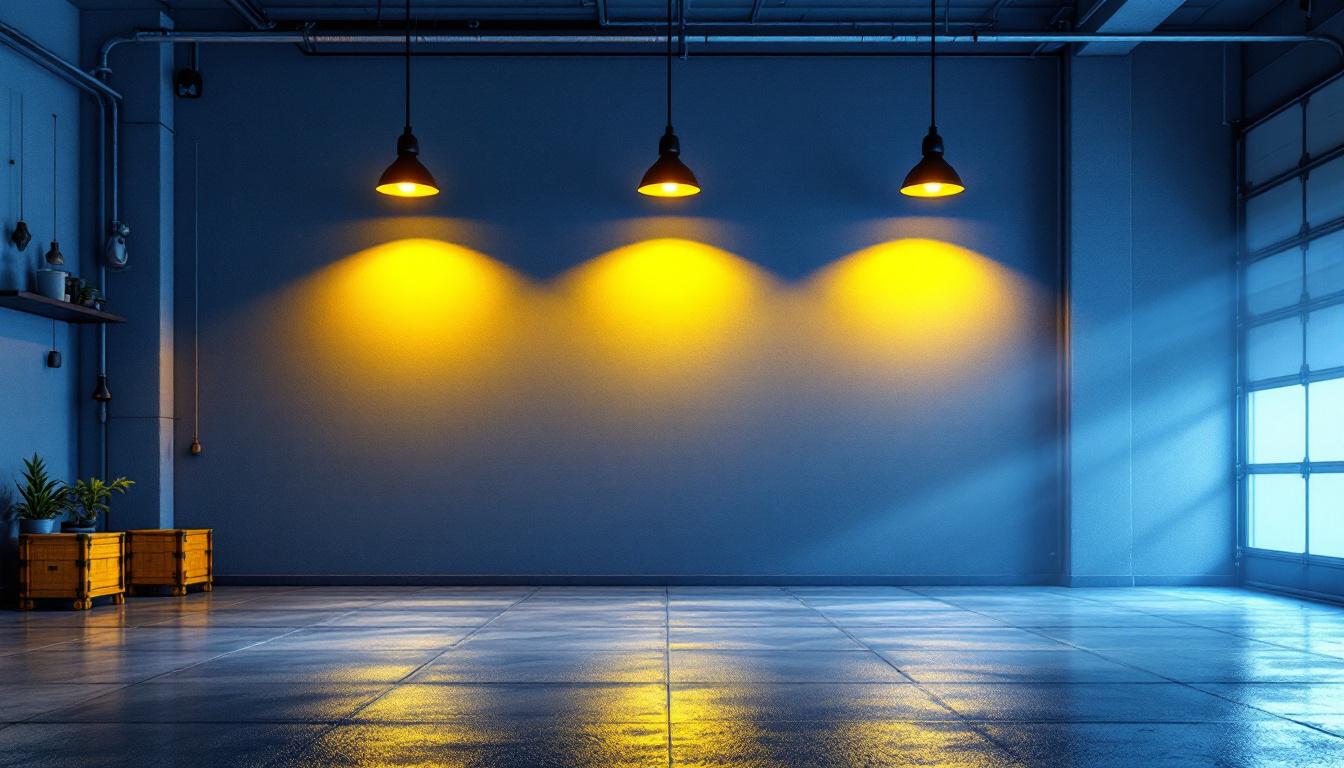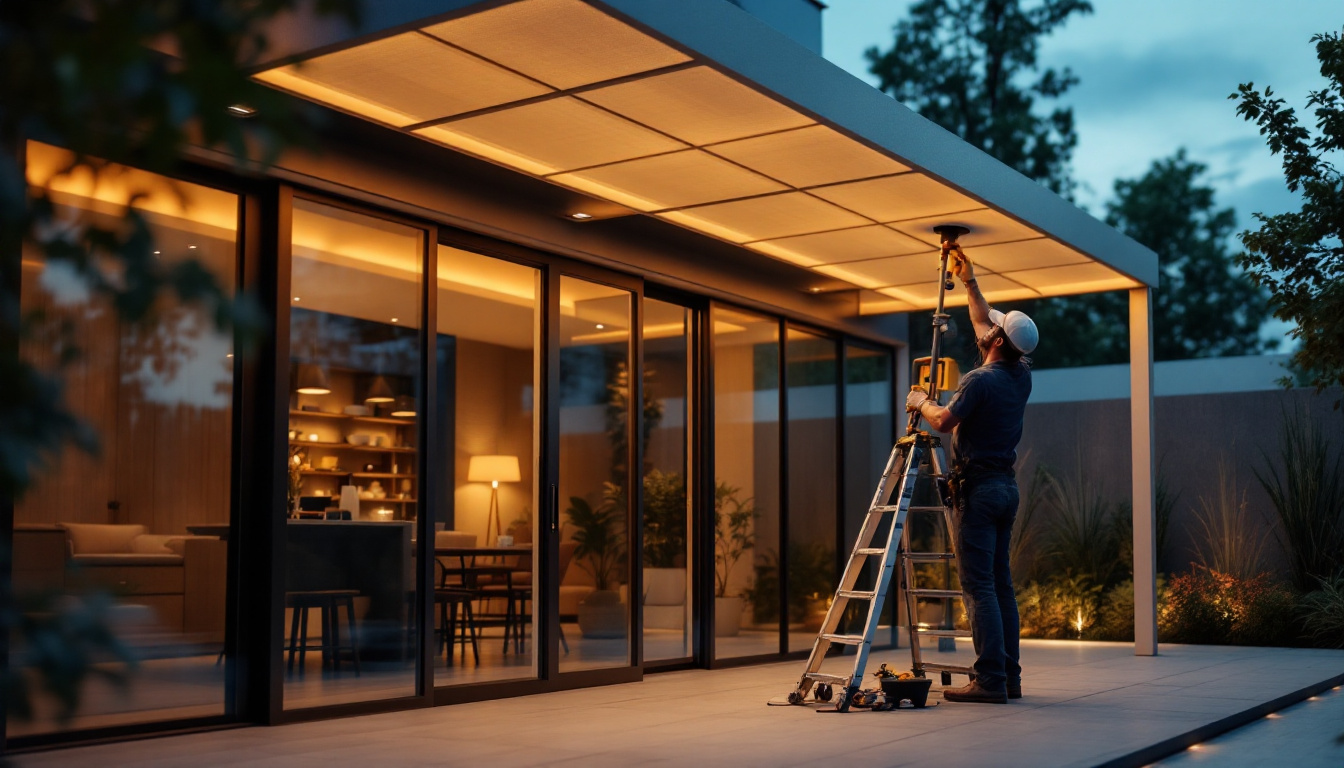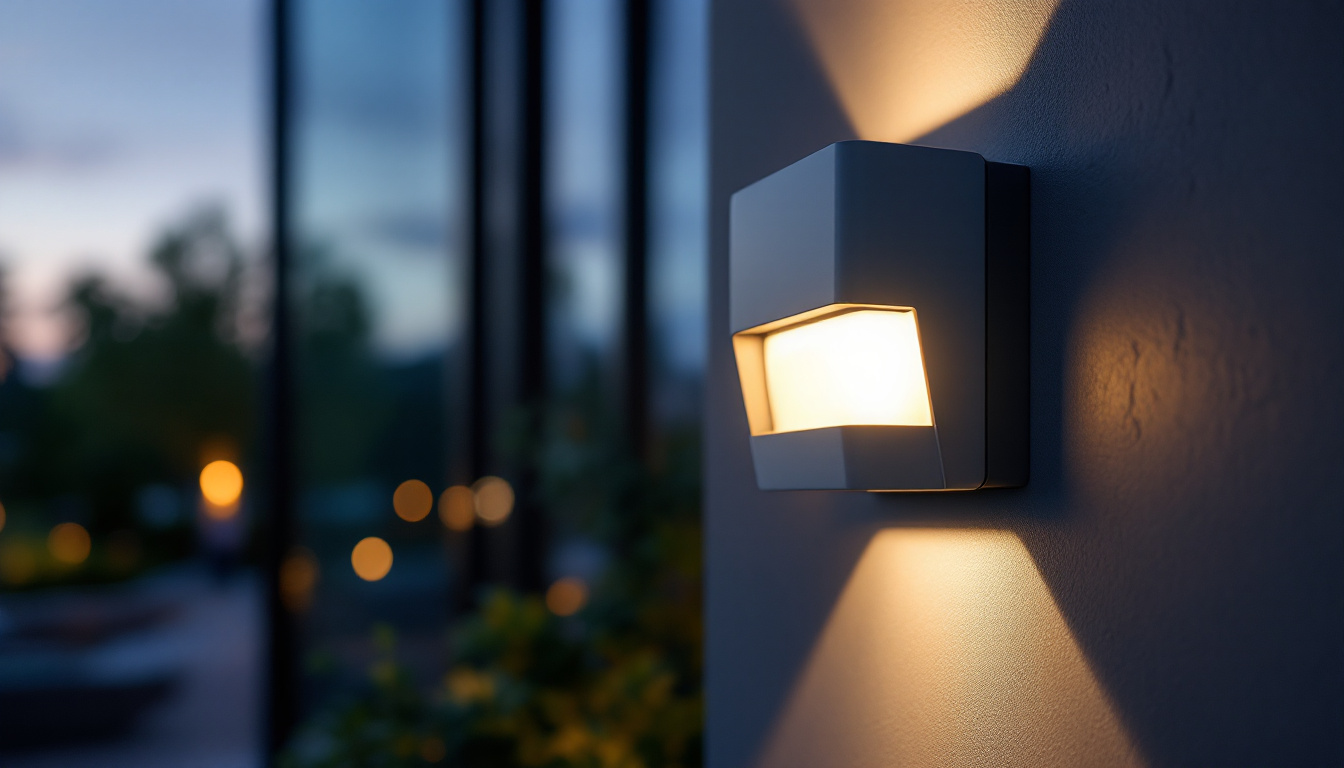
Garage lighting is an essential aspect of any well-designed space, particularly for those who use their garages for more than just parking vehicles. As lighting contractors, understanding the nuances of garage hanging lights can help in providing better service and solutions to clients. This article addresses some of the most common questions that lighting contractors encounter regarding garage hanging lights.
Garages serve various purposes, from storage to workshops, and even as recreational spaces. This diversity necessitates a tailored approach to lighting. Contractors often find themselves asking about the specific requirements for different garage setups. Whether it’s a compact space used primarily for parking or a sprawling workshop filled with tools and machinery, understanding the unique lighting needs is crucial for maximizing functionality and safety.
The primary functions of garage lighting include visibility, safety, and ambiance. Adequate lighting ensures that tasks can be performed efficiently, whether it’s repairing a vehicle or searching for tools. Additionally, proper illumination can prevent accidents and enhance the overall aesthetic of the space. For example, bright task lighting can help identify small parts that might otherwise be lost in shadows, while softer ambient lighting can create a more inviting atmosphere for recreational activities, such as woodworking or crafting.
The size of the garage significantly influences the type and number of fixtures required. Larger garages may necessitate multiple hanging lights or a combination of different lighting types to achieve uniform illumination. Conversely, smaller garages might only require a single fixture, but it must be powerful enough to cover the entire area effectively. Moreover, the layout of the garage plays a role; for instance, if the space is divided into sections for different uses, such as a storage area and a workshop, targeted lighting solutions like adjustable fixtures or track lighting can provide flexibility and enhance usability.
When it comes to hanging lights, LED fixtures are often recommended due to their energy efficiency and longevity. Additionally, fluorescent lights are still popular for their bright output and affordability. Contractors should consider the specific tasks performed in the garage when selecting the type of lighting, ensuring that the chosen fixtures provide adequate brightness and coverage. For instance, motion-sensor lights can be an excellent choice for garages that are frequently accessed, as they provide instant illumination when someone enters the space. Furthermore, dimmable options can offer versatility, allowing users to adjust the brightness based on the task at hand, whether it’s a detailed repair job or simply organizing tools.
Proper installation is crucial for maximizing the effectiveness of garage hanging lights. Several factors come into play during the installation process, and understanding these can help contractors avoid common pitfalls.
The optimal height for hanging lights typically ranges from 7 to 9 feet above the ground. This height allows for sufficient illumination while minimizing glare and shadows. However, the specific height may vary based on the type of lighting and the activities conducted in the garage. For example, if the garage is used for detailed work, lower fixtures may be beneficial.
Incorporating dimmers or smart lighting controls can enhance the versatility of garage lighting. Dimmers allow users to adjust brightness according to their needs, while smart controls can enable remote access and automation. This flexibility is particularly useful in garages that serve multiple functions, as it allows users to tailor the lighting to specific tasks.
Safety is paramount when installing garage lighting. Contractors should be aware of local electrical codes and regulations, which may dictate specific requirements for lighting fixtures, wiring, and placement. Additionally, using fixtures that are rated for damp or wet locations is essential if the garage is prone to moisture.
As energy efficiency becomes increasingly important, contractors are often asked about sustainable lighting options. Understanding the benefits of energy-efficient lighting can help contractors make informed recommendations to their clients.
LED lights offer numerous advantages, including lower energy consumption, longer lifespan, and reduced heat output. These benefits translate to cost savings for homeowners and contribute to a more sustainable environment. Additionally, LED technology has advanced significantly, providing a range of color temperatures and brightness levels suitable for various garage applications.
Contractors can promote energy efficiency by educating clients about the benefits of modern lighting solutions. Providing information on energy savings, rebates, and the long-term cost-effectiveness of LED lighting can help clients make informed decisions. Additionally, showcasing successful installations can serve as a powerful visual aid in discussions about energy-efficient options.
Many regions offer incentives for homeowners who choose energy-efficient lighting solutions. These can include tax credits, rebates, or grants aimed at promoting sustainable practices. Contractors should stay informed about local programs and share this information with clients to encourage the adoption of energy-efficient lighting.
Lighting design plays a crucial role in creating an inviting and functional garage space. Contractors often face questions about how to balance practicality with aesthetics when selecting hanging lights.
Lighting can significantly enhance the overall design of a garage by creating a welcoming atmosphere. Thoughtfully chosen fixtures can serve as focal points, while strategically placed lights can highlight architectural features or specific areas within the garage. Contractors should consider the overall style of the garage when recommending lighting options to ensure a cohesive look.
Current design trends in garage lighting include industrial-style fixtures, minimalist designs, and smart lighting solutions. Industrial-style fixtures often feature exposed bulbs and metal finishes, adding a rugged charm to the space. Minimalist designs focus on clean lines and simplicity, while smart lighting solutions provide versatility and modern appeal.
Color temperature plays a significant role in setting the mood of a garage. Warmer color temperatures (around 2700K to 3000K) create a cozy and inviting atmosphere, while cooler temperatures (4000K to 5000K) provide a more clinical and bright environment, ideal for tasks requiring precision. Contractors should discuss color temperature options with clients to align with their preferences and intended use of the space.
Ensuring the longevity of garage hanging lights is essential for maintaining functionality and aesthetics. Contractors often receive inquiries about maintenance practices and the expected lifespan of various lighting options.
Maintenance for garage hanging lights typically includes regular cleaning and inspection. Dust and debris can accumulate on fixtures, diminishing their brightness and efficiency. Contractors should advise clients to clean their lights periodically and check for any signs of wear or damage, such as flickering bulbs or corrosion.
The lifespan of garage lights varies depending on the type of fixture used. LED lights can last up to 25,000 hours or more, while fluorescent lights typically last around 7,000 to 15,000 hours. Contractors should provide clients with information on expected lifespans to help them plan for future replacements and maintenance.
If garage lights malfunction, clients should first check the power supply and ensure that the bulbs are securely installed. If issues persist, it may be necessary to consult a professional electrician. Contractors can offer troubleshooting tips and emphasize the importance of addressing electrical issues promptly to avoid safety hazards.
There are several misconceptions surrounding garage lighting that contractors should be aware of. Addressing these myths can help clients make better-informed decisions.
While adequate brightness is essential, brighter lighting is not always better. Excessive brightness can lead to glare and discomfort, particularly in smaller spaces. Contractors should emphasize the importance of balanced lighting that provides sufficient illumination without causing strain on the eyes.
Not all hanging lights are suitable for garage use. It is crucial to choose fixtures that are designed for the specific environment, considering factors such as moisture and temperature fluctuations. Contractors should guide clients in selecting appropriate fixtures to ensure safety and functionality.
While natural light can enhance visibility, it is often insufficient to replace artificial lighting entirely, especially in garages that lack windows or have limited daylight access. Contractors should advise clients to incorporate both natural and artificial lighting for optimal results.
Garage hanging lights are a vital component of any well-functioning garage space. By understanding the common questions and concerns surrounding garage lighting, lighting contractors can provide valuable insights and solutions to their clients. From installation considerations to energy efficiency and design aesthetics, a comprehensive approach to garage lighting can enhance both functionality and ambiance.
As the demand for versatile and efficient garage spaces continues to grow, staying informed about the latest trends and technologies in garage lighting will empower contractors to meet their clients’ needs effectively. By addressing common misconceptions and providing tailored recommendations, lighting contractors can elevate their service and ensure that clients enjoy well-lit, functional, and aesthetically pleasing garage environments.
Ready to enhance your garage lighting projects with the best value in wholesale lighting? At LumenWholesale, we provide lighting contractors with an exceptional range of high-quality, spec-grade lighting products. Say goodbye to inflated markups and hello to superior lighting solutions that meet the highest industry standards. With our commitment to affordability and convenience, you’ll enjoy free shipping on bulk orders, ensuring you get the premium lighting your projects deserve at the most competitive prices. Elevate your service and delight your clients with the perfect lighting ambiance by choosing Wholesale Lighting at the Best Value from LumenWholesale.

Discover the essentials of solar porch lights in just five minutes with this comprehensive guide tailored for lighting contractors.

Discover how partnering with canopy light specialists can elevate your business.

Discover how Wallpack is revolutionizing the lighting industry with innovative designs and cutting-edge technology.

Discover innovative cost-saving strategies for lighting contractors focusing on lighting cans.